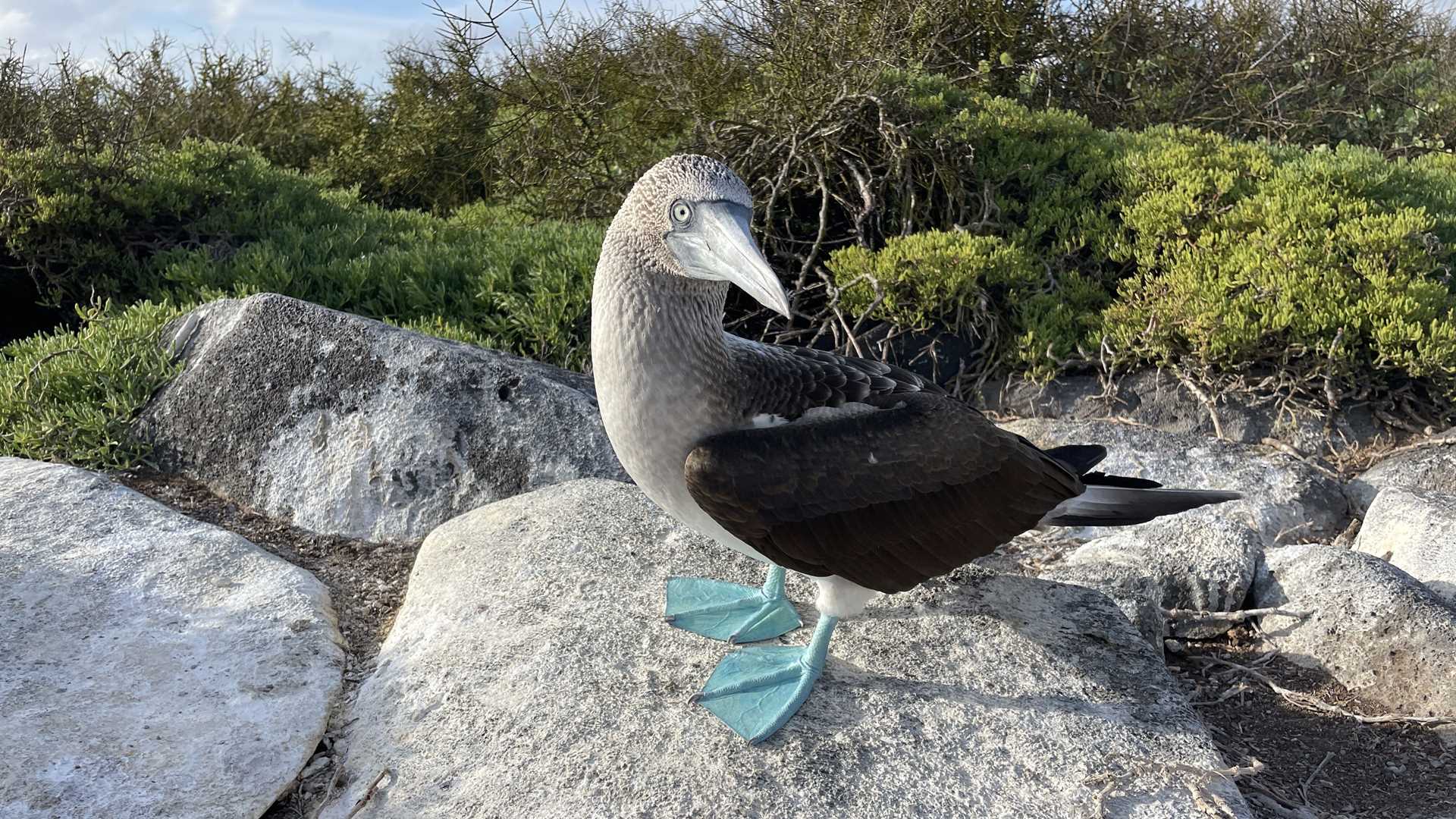Española Island is considered the oldest island in the Galapagos archipelago, and as such it is the home of many different species that can only be found here. Today our morning activities offered the most of its crystal-clear waters and the exuberant wildlife that can be found further inland. In the morning some guests chose to explore one of the most unique pristine white sandy beaches in the world; others adventured in the turquoise water of Gardner Islet, where playful sea lions accompanied us the whole time. The weather was perfect, and the water was warm and calm.
During the afternoon we ventured into the dry forest of Punta Suarez, where many of the inhabitants seemed undisturbed by our presence. The trail took us through a Nazca booby nesting ground first. Many individuals nest in this area and today was a good opportunity to closely observe these birds in their natural habitat. As we continued along the coast a curious Galapagos hawk landed atop a trail post and watched as guests carefully walked by. This area is also a nesting ground for the waved albatross, and it was a very special moment when we saw a youngling of this threatened species.
Certainly, this island is magical and unforgettable!







